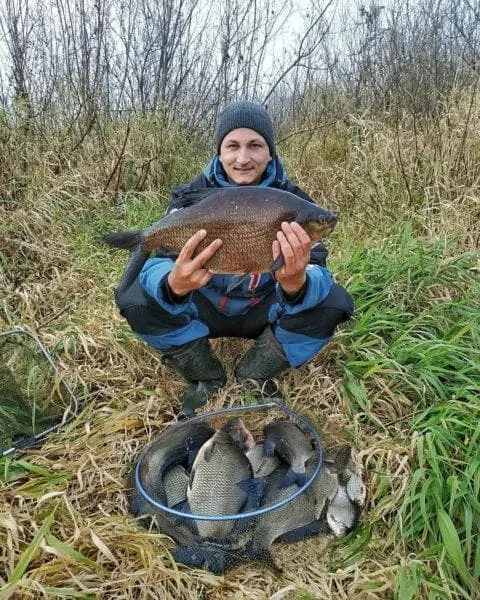Fishing for bream from a boat expands the area available to the angler. He gets to the right section of the river and anchors. This is followed by starting feeding, after which it remains to wait for the fish to approach and start fishing.
Bream hunting remains one of the most interesting and productive fishing activities. A lot of videos and even individual channels on YouTube are dedicated to her. When choosing videos to watch, it is advisable to opt for relevant materials for 2018 and 2019. They will introduce you to the latest fishing trends.
The cunning and caution of the bream leaves its mark on the direct procedure of fishing. Silence, well-chosen gear, and (most importantly) knowledge of the reservoir are required from the participants. Fishing in a reservoir is different from fishing in a small lake or river.
Ideally, the first trips are accompanied by experienced anglers who are ready to share the secrets of their skills. If there were none for one reason or another, the article will help to understand the process in detail and return home with a catch.
Place and time
The bream is active day and night. However, according to statistics, it is during the dark time of the day that the largest specimens come across. It is interesting that even 30 years ago, a fish weighing 3 kg or more was awarded the proud title of bream. Anything less was called a scavenger. Today the standards have changed. Even a 600-700 gram fish is called a bream. The situation is objective for European Russia, even the resource-rich Volga has not escaped the general trend.
So, you can go fishing around the clock, but the choice of location directly depends on the time of day. During the day, the depth starts from 3-5 meters, less does not make sense, because shy fish will notice the boat and simply will not come to the feeding point. At night, its courage increases, allowing you to fish at shallow depths, even in the shallows where the bream goes to feed.
The best place for fishing will be a coastal edge or dump in a hole. It is good to record such locations in winter, when the availability of water is higher, and the angler easily detects relief changes.
The time of year matters. So summer is the period when the fish are dispersed throughout the pond. With cold weather, it begins to roll into wintering pits. At greater depths, the bream also appears during the heat. Irreplaceable help will be provided by modern devices, namely an echo sounder. A quality modification will show where the fish is, eliminating aimless attempts and wasted time. The echo sounder will also help you choose the right gear, demonstrating the behavioral response of the fish.
Universal tips that are effective for any reservoir are associated with:
- fishing on dumps, channels, edges, in pits;
- anchoring the boat a little higher from the deepening;
- measuring depths using an echo sounder or marked fishing line.
If the river has a flat bottom topography, it makes sense to fish in the wiring when a regular float signals a bite. The length of the rod and the natural course of the bait will help you catch even shy fish. Going fishing at night, an impromptu “firefly” is added to the float assembly.
Watercraft and anchor
The choice of boat also determines the body of water. A small lake or a narrow river allows you to get by with small specimens with narrow sides. A large water area and, accordingly, large waves increase the requirements for the dimensions of the craft. In the mind, you should always keep a sharp change in the weather and a sudden wind, not neglecting the life jacket. Before you go fishing at night, be sure to purchase a lantern. It will show the location of the boat and save you from a collision with a boat.
When fishing for bream from a boat, two anchors are used. One descends from the bow, the second from the transom. The weight depends on the body of water and the dimensions of the boat. The anchor is easy to make yourself, ordinary bricks will do. The store version is smaller and lighter. Anchoring ensures that the boat is positioned at the desired point, downstream or elsewhere.
Tackle
The most common type of fishing is a side rod for bream, the rigging scheme of which resembles a winter rod. For an angler familiar with ice fishing, it will not be difficult to quickly assemble the mechanism. Even a beginner will be able to equip it, although he will need a more detailed manual, which there are many videos on YouTube.
The base part includes the rod itself up to 2 meters long. It is equipped with a coil (inertial is better), at the end the design has a whip. It can be a traditional winter nod or a kind of spring. Both a fishing line and a small diameter cord with an even thinner leash at the end are used. The bream is very careful and when it is caught, every millimeter matters.
Fishing for bream from a boat on board fishing rods in the course is carried out in a plumb line. Down the equipment is lowered with the help of a sinker, when lifting the fishing line (cord) is unwound manually as in winter fishing. Playing big fish is done with gloves so that the cord does not cut your hands. There are usually several leashes, their length is 30 – 100 cm. Hook No. 3-8 is tied to each.

In addition to the side fishing rod, float gear is actively used. This is an ordinary fly rod with classic equipment. It is indispensable when fishing for wiring, when the terrain is even, and the bream prefers to be caught at a certain distance from the boat.
In recent years, the feeder has been actively developed, although many anglers dispute its feasibility on a boat. The exception is wide reservoirs, when the feeder cannot be delivered to the desired point from the shore. In any case, the wave and fluctuations will create a certain discomfort, which coastal feeder fishing is deprived of.
There is a landing net on board by default. The bream is a strong fish and large specimens put up fierce resistance. Once above the water, they make jerks and twitches, which leads to annoying breaks from the hook. The landing net significantly minimizes such misunderstandings, and an elastic band is also used to absorb jerks in the installation.
Bait
In summer, bream prefers plant baits. Favorite dish is canned corn. Usually 2-3 grains are planted, this cuts off a trifle, attracted in large quantities by bait. In the warm season, barley is used in addition to corn. It makes sense to add it to the feed bank, along with breadcrumbs and other ingredients. When the bait matches the bait, there are more bites, and the tackle on the bream in the current from the boat does not matter.
In cold water, fish require more high-calorie food. The bream makes a choice in favor of maggot, worm and bloodworm (although the latter is more of a winter bait). Sometimes they are combined with each other and with vegetable nozzles. The combination is called a sandwich, attracting large specimens. When going fishing, you need to stock up on several types of bait in order to accurately guess the current preferences of the bream.
Lure
Shop compositions are well suited for feeder or stern balls thrown at the point. If fishing goes to the ring (more on that below), their number will not be enough, and the fishing itself will cost a pretty penny. Instead, the feeder is stuffed with breadcrumbs, cereals, roasted seeds. Usually they prepare for fishing ahead of time, collecting dried bread and food leftovers.
If the decision is spontaneous, the solution will be to buy cake and several loaves of bread. On average, in European Russia, a 10 kg bucket costs about 100 rubles. Sometimes bread is taken from unsold leftovers, which lowers its price. Also in any supermarket there is a rich selection of crackers.
All of the above is relevant when fishing with a ring, when the feeder is voluminous, and it needs to be filled to attract fish for a long time. The feeder option or catching on the current suggest classic balls from moistened bait. It is important to avoid the rapid disintegration of the mass, as it attracts unnecessary trifles.
As for flavors, each angler determines their benefits and harms individually. There are arguments for and against, disputes on this score do not subside. In any case, the main thing is not to overdo it.
Ring as a way to catch
There are several methods of capture, the most effective of which remains the so-called. ring. This is a kind of do-it-yourself donka for bream from a boat, when first a feeder is lowered to the bottom along a rope (strong fishing line). This is a nylon honeycomb mesh, whose size ensures that the bait is washed out, forming a cloud, which attracts fish.
A ring is put on the same line as the feeder. This is a metal element with one cut for threading. It is attached to the side rod, at the same time being a sinker and a means of fixing the leashes. The ring descends on the feeder and the flock, attracted by the food cloud, becomes easy prey.
The huge catchability of the equipment turned it into a poacher category. In many regions, the ring was banned, but instead, enterprising fishermen began to use the so-called. egg. A metal device with two balls, between which a fishing line is threaded. The action is completely identical to the ring.
The described equipment of side rods for bream gives exceptional efficiency, regardless of whether the angler goes to a stagnant or flowing reservoir.
Tips experienced
Finally, a few tips from experienced fishermen, following which a beginner will not be left without a catch:
- It is better to underfeed the fish. Excessive amount of bait worsens the bite.
- If the bream approached (bubbles come from the bottom), but there are no bites, you need to change the nozzle.
- After hooking, the fish is immediately taken up so as not to scare away the flock.
In summary, fishing for bream from a boat is an interesting but labor-intensive way. Success does not come immediately, consisting of the ability to find a suitable point, anchor and feed the flock. And of course, you can not do without a fishing spirit and luck.










